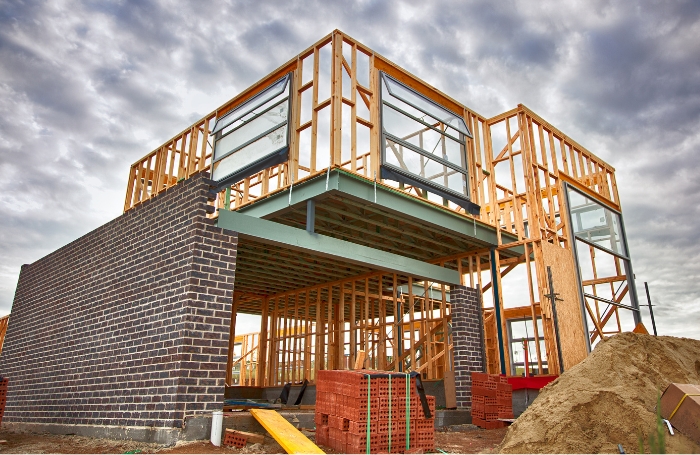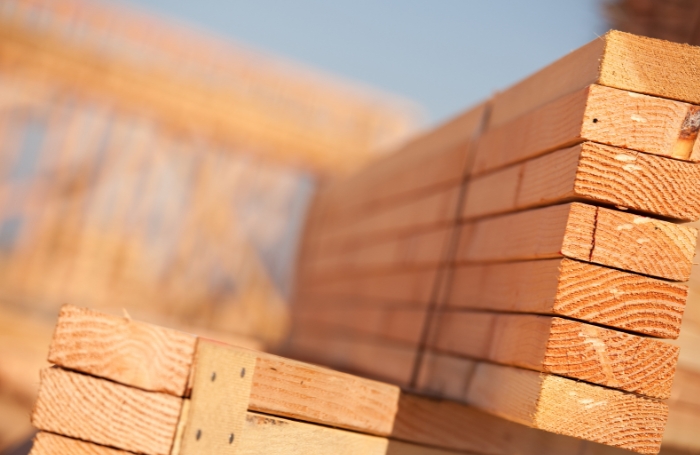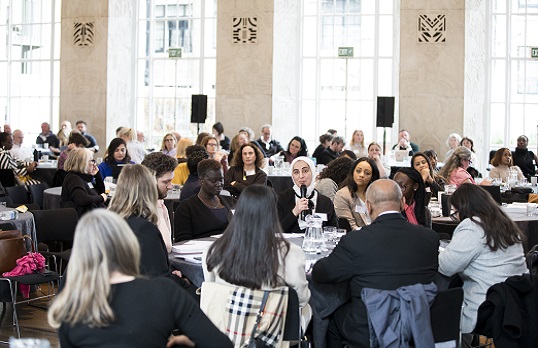Today (Thursday 21 March) RIBA Horizons 2034, a four-part insight-gathering programme that highlights global trends of the near future, is launched. Available exclusively to RIBA Members, each themed instalment comprises four scans written by respected experts and thought leaders.
The first group of scans looks at The Environmental Challenge, a challenge that different sectors of the built environment will have to work together to achieve the kind of sustainable outcomes the planet needs.
Two such sectors, architecture and the tree professions (including foresters and arboriculturists), can play a huge role in shaping the future. However, in the present day, there is a real opportunity to strengthen engagement.

What is being done to increase visibility at a forest level?
Specifying timber in construction to bring down your embodied carbon tally is just one aspect of the bigger sustainability picture that should be considered when opting for natural building materials.
Without any knowledge of the stewardship of the forest from where the timber was sourced, for instance, how can an architect be sure that their timber choices are producing genuinely positive outcomes at the forest level?
There is a growing movement among construction professionals and clients that specifiers need to know far more about the sustainable credentials of their materials, and the focus of attention is timber as many within the industry turn to this material to dramatically lower embodied carbon emissions of new buildings
“During the last couple of years there has been growing awareness that the visibility of outcomes at the forest level is limited at the demand end of the supply chain,” says Joe Giddings, UK Networks Lead at Built by Nature, which works to promote greater use of timber and bio-based materials in construction.
Built by Nature has been funding projects to investigate this and find ways in which the demand side, with architects playing a central role, can be more supportive of sustainable forestry infrastructure and timber suppliers through closer collaboration.
Read more about what architects need to know about mass timber insurance.
Why should architects look at the wider picture?
There is a similar recognition that it is time to look beyond carbon to the wider picture at the UK Green Building Council. It recently launched the Embodied Ecological Impacts Knowledge Hub to track and map supply chains for key materials, including timber and metals. It also looks more closely at how they are impacting ecosystems and biodiversity at their points of origin.
Whilst forest certification schemes such as PEFC & FSC have been incredibly effective at ensuring our forests are expanding, people tend to take it for granted that if they choose timber covered by one of the schemes, they have done the right thing and look no further, Joe suggests. But there is a growing awareness that the carbon cycles and biodiversity impacts of forests, and therefore timber products, are more complex.
Subsequently, there are many different forestry practices, many of which will be badged as sustainable, that produce very different outcomes. Monoculture forestry practices of cutting and replacing single species of trees, for instance, are seen by some to have very poor biodiversity outcomes, whilst others point out that the endangered red squirrel thrives in such plantations.
Traceability and visibility of data are also important. One of the projects Built by Nature is funding is creating supply chain maps for a series of recently completed cross-laminated timber (CLT) buildings. For this project, it is possible to trace back mass timber elements to forests where there has been active biodiversity measurement, monitoring and management.
The project will investigate how biodiversity data and forest data might be overlaid onto the PEFC Certification system, the world’s largest timber certification scheme. The idea is that individual buildings might one day have a visible QR code that would allow building users to learn more about the forest origins of the building.
Another Built by Nature funded project, led by Evolving Forests, aims to enhance the demand side of the supply chain’s understanding of the different stakeholder roles within the timber supply chain and so build better understanding of sustainable forestry, through a series of films, podcasts and other media.
Read more about RIBA's engagement overlay to the Plan of Work.

What does collaboration look like?
This promotion of the benefits of closer collaboration between architect specifiers and forestry stakeholders will be one of the themes running through a two-day partnership conference - Trees, People and the Built Environment. The conference takes place on 23 and 24 April 2024 and is supported by RIBA and other professional bodies.
But what does closer collaboration look like? This movement is not a matter of expecting architects to turn into eco-detectives every time they specify a piece of timber, Joe says. It’s more about changing the whole system by establishing closer and better-informed networks that make it easier for people to make responsible choices.
The grand vision that everyone wants to see, Joe points out, is for the built environment to act as a great carbon store, with trees and plants sequestering carbon that is then locked away in our buildings for their lifetimes.
“But if that is the idea, we need to be absolutely sure that when we specify timber, what is happening is based on successive cycles that are genuinely sustainable.”
Thanks to Joe Giddings, Built By Nature
Text by Neal Morris. This is a Professional Feature edited by the RIBA Practice team. Send us your feedback and ideas.
This article was amended on 26 March 2024.
RIBA Core curriculum topic: Sustainable architecture.
As part of the flexible RIBA CPD programme, professional features count as microlearning. See further information on the updated RIBA CPD core curriculum and on fulfilling your CPD requirements as a RIBA Chartered Member.









